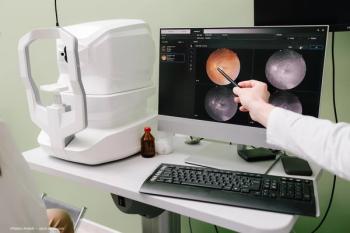
ASRS 2025: Neuro-ophthalmology: What every retina doctor needs to know
At ASRS 2025, Andrew G Lee, MD, gave key insight into the world of a neuro-ophthalmologist and why and when a retina specialist should consult a neuro-ophthalmologist
At the 2025 ASRS Annual Meeting, Dr. Andy Lee from the Blanton Eye Institute at Houston Methodist Hospital presented a talk titled “What Every Retina Doctor Needs to Know About Neuro-Ophthalmology.” The core message of the presentation centered on recognizing when vision loss or other visual symptoms are not caused by retinal issues but instead point to neuro-ophthalmic conditions.
Lee emphasized the importance of identifying a relative afferent pupillary defect (RAPD)—a key clinical sign indicating optic nerve dysfunction. He referred to this diagnostic tool, assessed by the simple swinging flashlight test, as a “superpower” for retina specialists. The takeaway: if both the patient and physician see nothing unusual in the retina, the issue may be neuro-ophthalmic in origin and warrants further evaluation.
He also discussed the reality that neuro-ophthalmologists (neuro-ops) are scarce and often not available in every city. As a result, they frequently work in a consultative capacity with retina and general ophthalmologists. Lee recommended reaching out to neuro-ops for guidance even if they won’t directly examine the patient—especially since routine appointments may be months away. For urgent cases, he advised that patients be sent directly to the hospital, where neurology teams and imaging resources can expedite diagnosis and treatment.
A frequently asked question Lee receives is: “Should we scan this patient?” His answer: if there is suspicion of optic neuropathy, cranial neuropathy, or any possibility the issue is intracranial or intraorbital, yes, a scan is necessary. The gold standard imaging protocol he recommends is MRI of the head and orbits with gadolinium and fat suppression.
In terms of diagnostic tools, Lee noted that while the swinging flashlight test remains invaluable, optical coherence tomography (OCT) has revolutionized neuro-ophthalmic diagnosis. By providing high-resolution imaging at the micron level, OCT can distinguish between retinal and optic nerve pathology with unmatched precision—making it an essential tool in differentiating retinal disease from neuropathies.
Newsletter
Don’t miss out—get Ophthalmology Times updates on the latest clinical advancements and expert interviews, straight to your inbox.













































